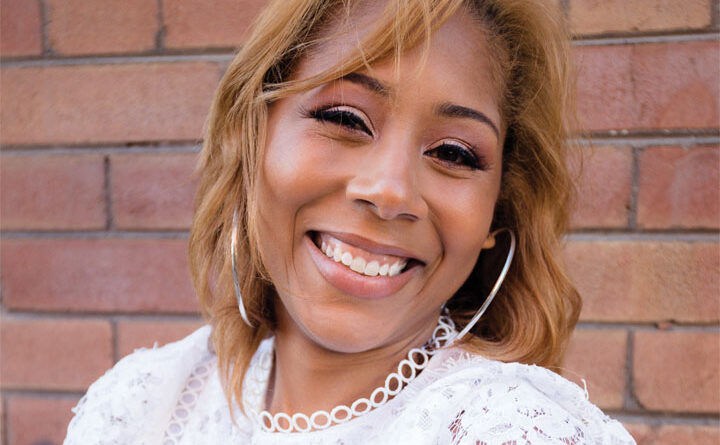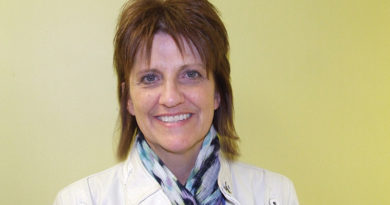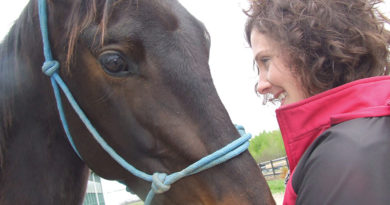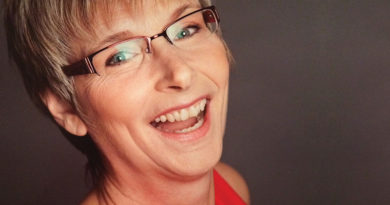Radical remission: 45 days to being cancer free
By Sari Huhtala
What if tomorrow you were told by a medical doctor you are going to die? That the cancer cells you were trying so hard to destroy through chemotherapy had now made their way to your brain, your neck and your armpit, and that there was no hope for survival. Would you believe it? Would the nocebo effect take hold and become your destiny?
Perhaps, but Sasha Reid, a Markham, ON holistic practitioner, decided to write her own script and change the course of her life forever. She became strong in her conviction that if her children were going to stand over her grave, she wanted them to know she did everything in her power to survive. She wanted them to know that she did everything possible to live to see the day they graduate, or they marry or have children of their own. Truth is, up until that point, she hadn’t. She had only tried conventional medical treatments, but there was an entire world of natural approaches at her fingertips that she had not even considered back then, she admits.
And so the day that the doctor sent her home to begin palliative care, her father gave her sage advice.
“He said, ‘Sasha, man does not determine your fate. They just study like you and I so you cannot put all of your faith in the (medical system). You’re going to overcome this, then you’re going to go on to help others.’”
And she did.
But in order to arrive at a place of such strong conviction and fortitude one must know their “why,” she says, their reason to fight to live.
“What’s your why?” Reid asks. “If you know why, even if there are bumps in the road, if you’re solid on your why you can stick with it. My ‘why’ was my children. If I’m going to die, then I’m going to die knowing that I did everything possible so they know.”
At those crossroads, at the darkest of times, one has two choices:
“Lie down and crumble or tap into that mamma bear.” Reid says. “This is the time to stand up and be responsible for your own life. Stop pushing it into the hands of doctors and scientists. There is so much more.”
Her first glimpse at the power and healing potential of alternative medicine, including energy therapies, came at one of her darkest moments during cancer treatments.
When she was “extremely sick” a natural practitioner, who volunteered at the hospital to provide reiki and reflexology treatments to patients, came in to see her and asked if she would like a treatment.
“I remember her touching my feet,” Reid says. “I was breathing and the next thing I know I was asleep and when I woke up she wasn’t there and I was pain free.
“That’s when I realized there was something to this.”
Still, it was not enough to shift her beyond the mainstream narrative for overcoming cancer and she continued to look at the medical options.
“In the UK I didn’t grow up knowing about holistic health. We only knew that if you are sick you go to the doctor.”
At the time of her cancer diagnosis she was only 31 years old and living in the UK.
Her symptoms began as a rash and a lesion in 2012. Doctors had said it was a cyst, perhaps a fungal infection or ingrown hair.
“I knew something was wrong,” Reid says. “I had lumps on the left side of my groin.”21
She experienced no fatigue, only rashes and small bumps popping up on her face, arms and legs, that let out lymph-like fluid, she recalls.
Yet she continued her high-stress lifestyle as a human resources manager in a “very stressed out job,” commuting 25 miles to work each day. Couple that with the “heartbreak,” she says, of facing the reality her husband had been sent to jail, and the juggle of three children under the age of eight, along with an unhealthy penchant for Dominos pizza, white rice crackers with Nutella, white pasta and loads of dairy, cheese and eggs, sugary foods, and corn and broccoli as her sole source of plant-based nutrition, and it was a recipe for illness waiting to happen, she notes.
“I was living life without health as a factor. I didn’t even think about it. But my body was basically at the breaking point.”
She says she exercised and did zumba three times a week, which she believed was enough to maintain health.
A sign her system was not functioning optimally, she now realizes, was the fact she had coped with chronic constipation since age 14.
In early 2013 she found a lump, and was diagnosed in March 2013 with non-Hodgkins lymphoma – Anaplastic Large T Cell Lymphoma – a rare and aggressive form of cancer.
She expended much of her energy initially searching for people who had that form of cancer, and realized then that few survive it.
“I realized I was scared to be vulnerable. It was a very painful, traumatic time in my life.”
She began a protocol of four months of chemotherapy. The cancer went into metabolic remission, but six weeks later came back. She started another four months of chemotherapy, and cycled into remission, then the cancer came back a third time. She decided to have a stem cell transplant, and yet, the cancer metastasized.
The trigger that allowed cancer to take hold, she realized much later, was when her husband went to jail.
“I was heartbroken,” she says. “I think that heartbreak I masked with a gigantic smile and by doing that I internalized it.”
Add to that the “horrible terrain inside” her body, and the environment was ripe for cancer, she says.
She and her husband had been together for eight years. She stood by his side throughout it all, and today celebrates 19 years together. He made a mistake and was paying for it, she says. Despite the shame she says she felt, she reached out to family and they welcomed her with open arms, she remembers.
“There’s an emotional aspect (to cancer),” she says.
“You walk around with a hat that says shame. Transformation occurs through doing – to be unapologetically you.”
People would ask, after her husband went to jail, “Don’t you feel embarrassed?”
“That’s how my transformation occurred, by me being vulnerable and honest with what was happening. It requires some tenacity. It requires some resilience.”
The nudge to consider alternative medicine happened quite serendipitously while at a conference in the UK in 2013, where a family member was receiving an award.
As she sat in her wheelchair, a chemo kit on her back, skin grey, no hair, no eyebrows and no energy, a man came up to her, a nutritional microposist, and said he could help her.
“I’m just here to have a good time and not worry about my illness,” she had said to the man, brushing him off. She had already received the results from her PET scan, showing the cancer had metastasized to her brain, armpit and neck.
At the time that her father provided the wisdom to look beyond conventional medicine, he urged her to contact the nutritional microposist.
That was in October 2013. She made an appointment for live blood analysis.
“I went to see him and he explained everything about my internal environment and how pathogens work.”
He explained how she had no cell wall membrane, making
it ripe for bacteria, fungus and parasites to take hold.
He had said, “This is a sewer system. You have a swamp. No beautiful plants will grow out of a swamp. How’s it capable of healing until you clean up the environment they’re living in?”
He introduced a 120-day diet consisting mainly of vegetables, and minimal fruit. She followed a strict alkaline no sugar, no dairy plant-based program for 90 days. She changed her diet from a starch-a-tarian to a plant-based vegan, she says. Healing doesn’t occur overnight, she says. It takes 120 days for the red blood cells in the body to turn over. It would be very difficult to clean up sludge if one continues consuming all types of foods, she explains.
Detox is important to “get the terrain clear.” She also added colon hydrotherapy sessions, enemas and bioresonance therapy to her regime.
Forty-five days later, after following the diet, she went for a follow up PET scan and there were no active cancer cells.
“The doctors kept saying it’s unbelievable. We could call it a radical remission.”
“It takes 90 days for hormones to get under control with nutrition and it’s not a one-size-fits-all approach. But that’s how I was treated with allopathic medicine. At the end of the day there is no one size fits all approach in holistic care.”
Even when it comes to vegetables, some may be problematic for an individual and others not, she explains.
A telltale sign of food sensitivities is cravings. The body craves the food it is sensitive to, she says.
“We let off a natural histamine when we eat something that doesn’t agree with our bodies,” she says. “When you’re releasing something constantly, like histamine, it affects the hormones.”
Hormone regulation becomes dysfunctional, resulting in a cascade of symptoms, she says.
She has been cancer free since December 2014. Reid went on to study nutrition and complementary therapies, and created what she calls the tenacious butterfly community in Markham, as well as the Alkaline Wellness Centre.
The journey to heal and release emotional attachments, even childhood traumas, still continues, she says. The layers of emotional attachments are not necessarily within the consciousness, so turning inward, learning to meditate and seeking spiritual connections is part of the healing journey.
Last year she attended a yoga retreat – a new moon ceremony and guided meditation. She was asked to write her intention for the ceremony before beginning. During the Shamanic drumming, she says, she felt like she was choking. At the end of the ceremony, the facilitator asked everyone to open up and talk about how they felt.
“When it got to me I just burst into tears and couldn’t stop crying. I’m sitting with 10 women here and everybody said great things and I couldn’t stop crying. When I opened up the paper to read my intention out loud, I had realized I had written “To be able to feel again.”




